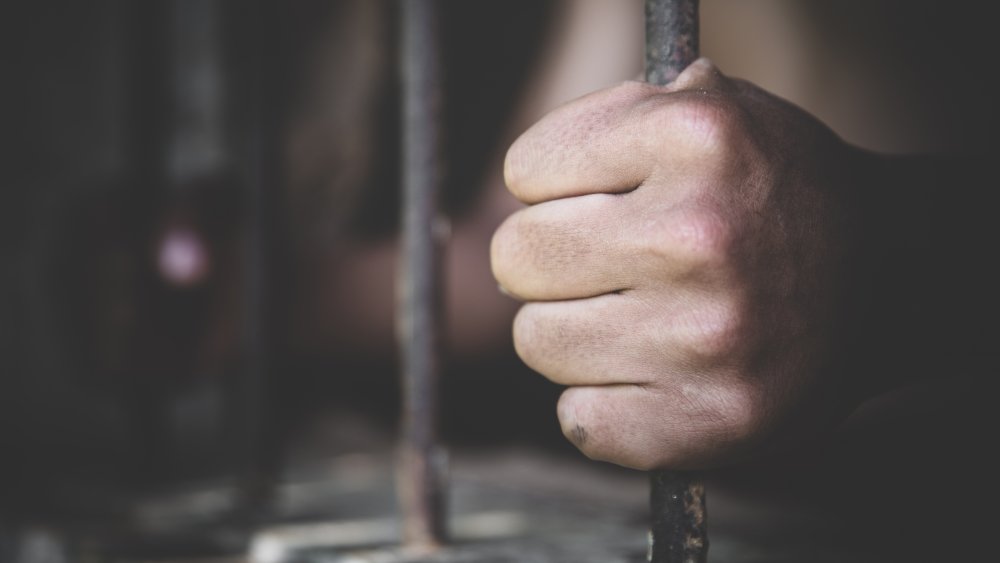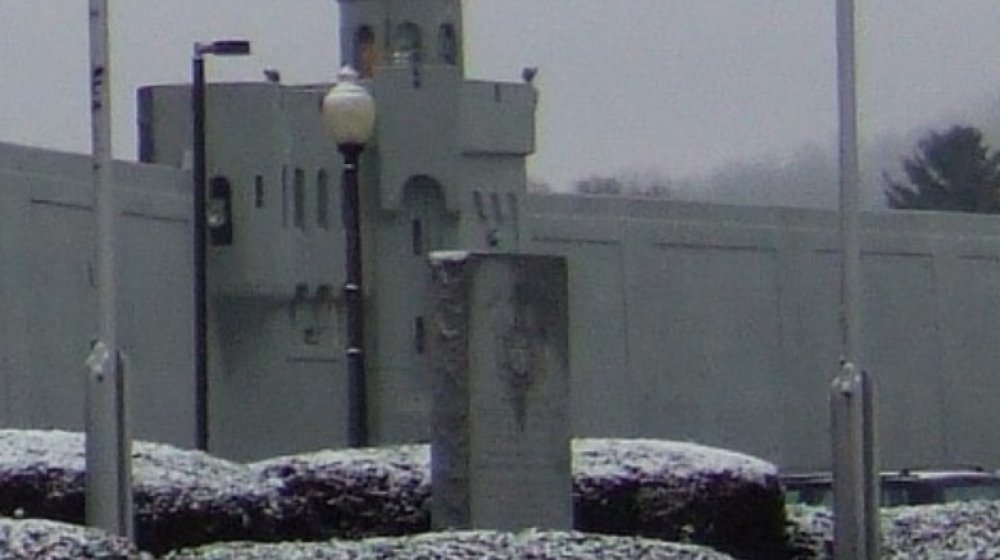The Grim Story Behind The Attica Prison Uprising
Per History, on September 9, 1971, "frustrated with chronic overcrowding, censorship of letters, and living conditions that limited them to one shower per week and one roll of toilet paper each month," inmates seized and took control of the maximum security Attica Correctional Facility near Buffalo, New York. Per the New York Times, prisoners had attempted to voice their demands in July of 1971 via a "statement of 27 demands" that "touched on medical care, work conditions, censorship, diet, parole procedures, and religious expression." According to the Global Nonviolent Action Database, they received no response and continued pressuring Attica's Corrections Commissioner Russell Oswald throughout the summer.
Many of the 2,200 inmates joined in the rioting, which entailed "beating guards, acquiring makeshift weapons, and burning down the prison chapel." By the end of the day, the local police had secured most of the prison, but "1,281 convicts occupied an exercise field called D Yard, where they held 39 prison guards and employees hostage for four days." History notes that at this point Oswald agreed to the prisoners' demands, but "talks bogged down when the prisoners called for amnesty for everyone in D Yard, along with safe passage to a "non-imperialist country" for anyone who desired it." Observers asked then-New York Governor Nelson A. Rockefeller to come to the prison "as a show of faith," but Rockefeller refused and ordered authorities to retake the prison via force.
'Attica! Attica!'
On the morning of September 13, 1971, officials called on the prisoners occupying the yard to surrender; they refused, holding knives to their hostages' throats, at which point, according to History, "helicopters flew over the yard, dropping tear gas as state police and correction officers stormed in with guns blazing. The police fired 3,000 rounds into the tear gas haze, killing 29 inmates and 10 of the hostages and wounding 89." Authorities reported that the prisoners had killed their hostages, but "autopsies showed that these charges were false and that all 10 hostages had been shot to death by police. The attempted cover-up increased public condemnation of the raid and prompted a Congressional investigation." In all, 43 people were killed during the uprising, making it the worst prison riot in United States history.
Per Teen Vogue, "no state troopers involved in the massacre were ever indicted, much less convicted of any crimes" while "eight inmates were convicted of crimes related to the riot by the New York state commission." Seven of those inmates were later pardoned by Hugh L. Cary, New York Governor from 1975-1982, and the eighth inmate's sentence was commuted. The New York Times notes that "today, there are Muslim chaplains in most of the state's prisons, inmates can take their high school equivalency tests in Spanish, and access to law libraries is guaranteed. They are also entitled to more regular showers." Despite some improvements, "many of the changes that were promised were never made or have been rolled back."

